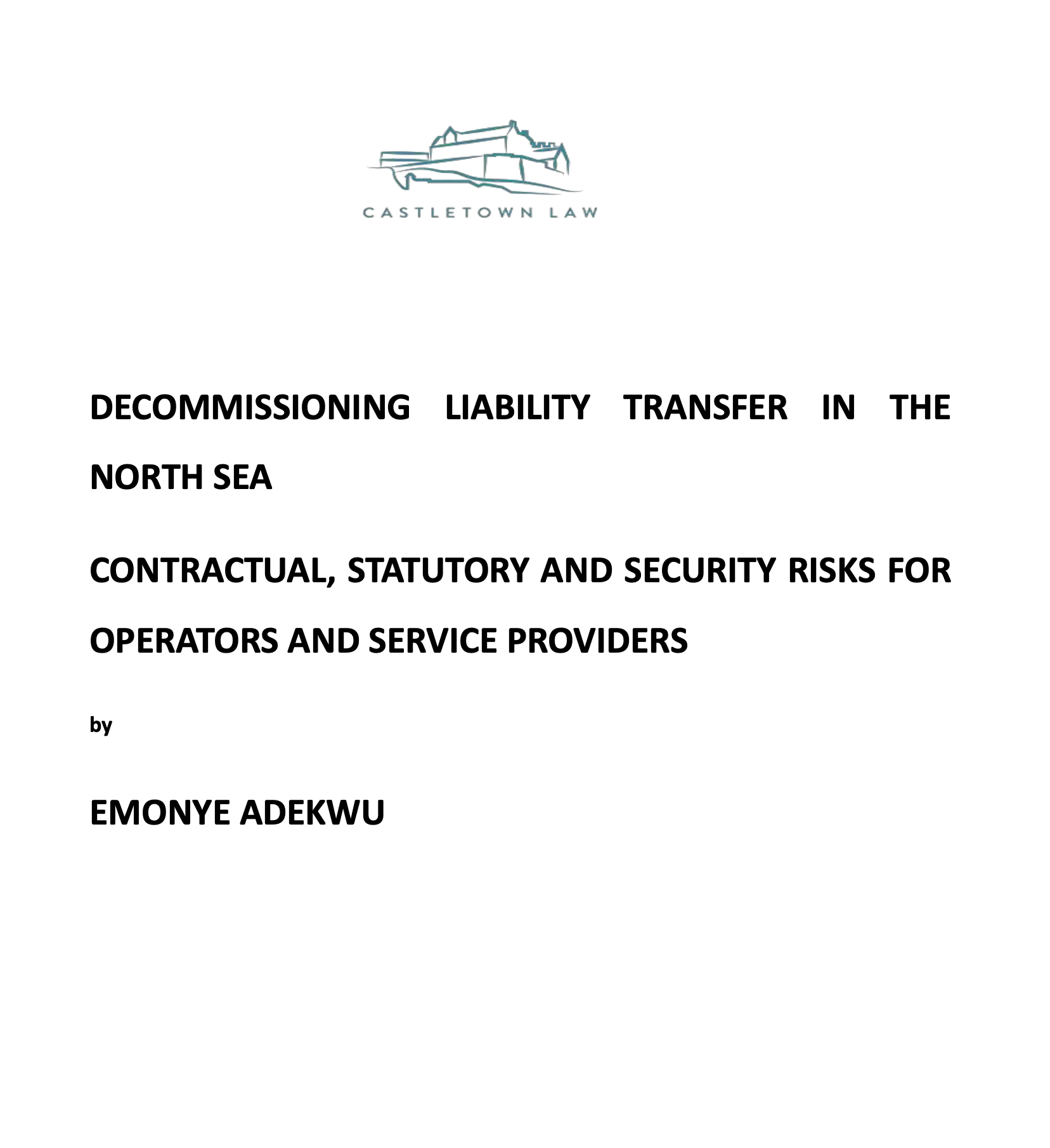Battery Storage (Aug 2019)
Introduction
This paper covers the use of battery storage as a developing but essential element in the mix of technologies which is required to allow our electricity generation and transmission systems to work across the methods of generation, demand and supply balance and control systems. The further development of storage will increase with the changing dynamics in transport and demands for sources of energy conservation.
Based on government objectives for low carbon industry and domestic concerns around health and environment, the current dynamics in the energy sector are likely to continue into the foreseeable future, which is a positive incentive for the proponents of electricity storage.
We consider the part electricity storage may play as a battery-based technology. We believe other forms of storage or energy conversion technologies also have a valid and meaningful role and we will later publish further thoughts on these aspects.
What is Battery Storage
This question started getting peoples attention when in the early noughties a focus on new forms of battery technology and new efficiencies suggested a renewed interest in storage of electricity. This later led McKinsey to include Energy Storage in their paper on disruptive technologies and to predict that energy storage would have a global value of between $90Bn to $635Bn per year by 2025, with more than half of that demand coming from the evolution of electric and hybrid vehicle adoption.
Battery storage (and energy storage generally) is a means of converting electrical energy into a state of transient suspension in a storage medium. In this case, the most commonly known medium are lead acid batteries but one of the most efficient methods is lithium Ion batteries.
The level of storage now in contemplation, ranges from small domestic wall mounted units to large storage arrays which can support network supply on instantaneous call off and short sustainability.
The predicted changes in battery technology in the paper by Hensley and Newman, included in the McKinsey report references, are being borne out in industry and there is a quiet excitement building around the potential in the technology.
Applications of Storage
The applications are many and the Ofgem working stream 6 group looked into the numerous potential uses of storage in great detail before producing a report which supported the introduction of incentives for storage to be included in the renewables incentives under consideration by the UK Government.
Some elements taken from other ideas of the use of storage include:
- Electric Vehicle- progression to use of electric (EV) and Hybrid vehicles is accelerating the use of vehicles as a two-way system for supply and demand. This innovation changes the dynamics in local network management but also makes use of EV’s potentially attractive.
- Underserved markets- use of storage as a stability measure in reliability of systems and providing supply to communities on a more stable basis can be supported with battery storage.
- Stability of Supply- using storage to support supply to economically important drivers and essential services may provide reduced impacts from outages and network instability
- Supplement to generation- where areas are dependent on intermittent generation sources such as wind and solar, storage can be used to supplement and offer sustained levels of supply when the generation source goes offline.
- Peak Load shifting- this allows the amount of available generation required to meet peak demand to be managed so that instead of having generation assets on standby to meet peak demand, battery storage can be used to cover the short periods when peak demand applies.
- Frequency Regulation- the deviation from required frequencies is currently managed by using parasitic load for frequency and voltage management. Batteries can provide an economic means of managing frequency and releasing the additional capacity of generation otherwise kept in reserve.
- Asset Deferral- the resilience of the grid and network is related to the load it has to carry. If battery storage can help manage that load through frequency response and peak load shifting, then improvements in capacity of the network and additional generation may be deferred in favour of a more economic solution through use of storage assets.
For a more in-depth and detailed analysis view, on these and other aspects, refer to the excellent government paper:
Regulation of Storage
The initial Ofgem and UK Government response to the 2016 consultation on “A Smart and flexible energy system” led to a decision that the barriers to the introduction of commercial status storage in the UK had to be addressed.
In their “minded to” statement in November 2018, Ofgem in their preface to a consultation said the following:
“Electricity storage is becoming more common and we are seeing increased take up of heat pumps and electric vehicles. The existing approach to reflecting the costs of the electricity networks in the charges people pay is becoming increasingly problematic. The rapid pace of changes in energy mean that the issues with the existing charging structure are likely to become worse over time. Ofgem is therefore taking action to address this and to ensure that network charging works in the interests of current and future consumers as a whole.”
In the consultation proposal from BEIS on 14 January 2019 the following position was set out.
“the UK, Scottish and Welsh Government agree that a storage facility is a form of electricity generating station. This means that a storage facility with a capacity of more than 50MW will need development consent as required by the Planning Act 2008 in England and Wales or Scottish Ministers’ consent under section 36 of the Electricity Act 1989 in Scotland (s. 36 consent).”
In June 2019 the Solar Power Portal reported:
“Regulation and policy decisions are the biggest barriers to UK energy storage and are in need of significant changes, says industry experts”
Part of their input was that the regulatory structure and policy was lagging behind technology advances and opportunities were being lost. Other parts of the sector have similar experiences.
As a subset of generation, electricity is subject to the same provisions as generation and so must follow all the relevant Grid Codes and Agreements.
For the moment the ongoing consultations and consideration including the competition for Storage at Scale mean there may be further changes in regulation in store!
Although there are some grants and other support available, it would be wise not to consider storage projects based on a subsidised regime. The two projects in the news in 2019 at York and Clayhill both boast their subsidy free credentials.
See Overcoming uncertainty: UK energy storage market trends for March and February 2019. However, absence of subsidy may also be a disincentive but the Solar Power Portal suggests “UK battery storage capacity could reach 70% growth in 2019 as ... the meter battery and subsidy-free solar farms with co-located storage.”
So while the position on regulation remains fluid, the opportunity to look at subsidy free development of storage on a co-located or stand alone basis is available for those who have a deep understanding of how the model for funding and return on investment works based on the available income streams.
Some options which may arise in future regulation would be: a restructuring of the DUoS charges to meet a more modern model of the system; mandatory standards and sizing for certain applications; mandatory DSR contracts for all connections; building and planning regulatory changes to allow for manufactured technology installation; load limiting for non-essential power consuming equipment; permission for DNO’s to provide focussed incentives for short/medium term solutions and incentives for community/commercial/industry based schemes.
Income Streams for Battery Storage
During discussions on the application of storage, the prevailing assumption always has to be that the asset providing the storage will be sufficiently charged when needed. This becomes a challenge for owners and operators because there may be penalties for non-availability. Such penalties may impact severely against intended revenue streams.
Storage at scale is already a reality (Escondido/Aliso Canyon, California and Hornsdale, South Australia) but revenue stacking is still an essential consideration in modelling the viability of the projects which are not of such a scale.
In the UK, there is need to differentiate between behind the meter services that storage operators might provide to a variety of privately contracted customers and utility scale projects where the DNO will be the customer. Behind the meter projects allow the storage operator to buy electricity by private contract and to provide storage services by private contract without utilising the DNO assets. These revenues would include peak saving for buyers, capacity payments from utilities, voltage supplement and frequency management as mentioned above. This ability to have multiple sources of revenues available to one asset has been used successfully in non-recourse finance and is referred to as stacking.
As noted above, the availability of storage may allow the DNO to defer or minimise capital expenditure so a justifiable expenditure on storage facilities can be considered, either as an outsourced facility or a third-party provision funded on non-recourse funding against income streams subject to long term contracts. Where such contracts are entered into, there will be capacity availability and performance warranties given to the DNO buyer and so multiple stacked incomes are not preferred. This is because the DNO may require a series of services and may require them instantaneously. These can cover frequency response, voltage maintenance, power supplement and emergency back-up. In utility scale projects the DNO can justify capacity and availability payments based on the deferred expenditure, the maintenance of services and the accessibility of instantaneous services.
The operator of utility scale projects can justify the funding of the project through long term contracts with DNO.
Conclusion
Battery Storage is with us for the long term. It is recognised as essential part of managing an intermittent generation mix and a critical solution to grid and network management.
It provides options for maximising income across differing income streams and provides several services of benefit to the increased utility of renewable generation and efficiency of existing generation. Utility scale storage operates under specific constraints.
The integration of storage with solar, wind, bio-mass and other renewable generation technologies, creates a more robust model for renewable energy and storage and allows for credible funding models to be developed. The regulatory structure is still evolving but it is unlikely it will include any substantial subsidy arrangements and so subsidy free models should be the main priority.
Stacking of revenues from different income streams will continue to evolve and regulation should adjust to facilitate this.
At scale, projects are in their early stages and there is an opportunity to bring together industry leaders with a common interest to develop a structure of mutual interest support for the development of utility and distributed storage facilities.
All the evidence points to storage being a major disruption in the traditional power generation sector as predicted by McKinsey in 2016.











